Trends in X-ray Fluorescence and X-ray Diffraction
Several leading scientists discuss recent developments and trends in XRF and XRD techniques.
Heading into the 2016 Denver X-ray Conference in Chicago this July, we asked several leading scientists, all of whom who will be speaking at the conference, to discuss recent developments and trends in X-ray fluorescence (XRF) and X-ray diffraction (XRD) techniques. Below, Tanja Paunesku of Northwestern University, John A. Anzelmo of Anzelmo & Associates, Carlos R. Appoloni of the State University of Londrina in Brazil, Herbert Poellmann of the University of Halle in Germany, and Tom Blanton of the International Centre for Diffraction Data discuss various aspects of their work with these techniques, including developments in XRF microscopy, advances in sample preparation for XRF, the role of XRF in cultural heritage studies, the use of XRD in the analysis of high-performance building materials, and recent progress in two-dimensional XRD detection.
The Scale-Defying Versatility of X-ray Fluorescence Microscopy
Tatjana Paunesku
Few natural sciences depend on other areas of science as much as biology does. The complexity of biological systems requires that they be investigated by techniques and instruments used and developed for chemistry, physics, and materials science and then also those developed specifically for biology. Layers upon layers of information revealed by biological samples led in recent years to the development of many different types of “omics” studies, each focused on specific biological molecules (such as proteomics and genomics) or their modifications (such as metallomics and epigenomics). Each new compendium of techniques for interrogation of biological material brought with it significant new insights; most of them (such as molecular biology techniques) require that the samples be reduced to subcomponents before they can be studied at all. However, while different rules guide chemistry of bulk materials versus nanomaterials versus molecules, no simple delineation between scale and organizational level is possible in biology. This lack of delineation has led to gaps in our understanding of biological systems at different size scales and organizations. Traditionally, images of biological material were segregated into those produced by optical microscopy with resolution of 200 nm at the very best, and those produced by electron microscopy, with resolution in nanometers but produced with samples reduced to thin slices.
Hard X-ray fluorescence (XRF) microscopy has the potential to fill this gap in imaging. The best current XRF resolution is in tens of nanometers, while sample penetrance is measured in tens of micrometers. Depending on a given X-ray microprobe, the field of view and sample size vary between millimeters and hundreds of millimeters. Images are obtained by scanning samples with a focused X-ray beam and collecting fluorescent X-rays emitted by the sample area excited by the incoming X-rays. The quantity and wavelength of photons emitted by the sample depend on the sample’s elemental content for a given voxel, and an information-rich elemental map of the sample is generated upon data analysis. Such a map resembles subcellular, cellular, and tissue organization, where each cellular component can be recognized by its own elemental makeup. Thus, for example, cell nuclei can be recognized by increased Zn content in comparison to cytoplasm, while mitochondria contain comparably more Mn (1).
Since the development of synchrotrons, X-ray fluorescence (XRF) has been used for microscopy, but the technique truly blossomed only with the development of third-generation synchrotrons (2). Here once again, significant advances in biology are made possible by breakthroughs in physics, engineering, and computing. The novelty of this imaging technique, the challenges inherent in sample preparation, the possibility of sample degradation by radiation damage, and the difficulties of data processing are still significant obstacles for XRF microscopy. For example, according to Web of Science, fewer than 100 articles each in cell biology or neuroscience refer to XRF as a “topic.” This fact appears almost incredible when one considers many thousands of publications coming from X-ray protein crystallography. X-ray diffraction, similarly to X-ray fluorescence microscopy, also began with the development of synchrotrons.
Recent computational advances in data processing are leading to new ways to reconstruct information from different types of imaging data. Such advances have led to development of super-resolution optical microscopy techniques, such as stochastic optical reconstruction microscopy (3), while in the field of X-ray imaging simultaneous use of coherent diffraction imaging and hard XRF became possible (4). With the steady improvements in data reconstruction and the development of fourth-generation synchrotrons, we can expect a bright future for XRF microscopy.
References
- T. Paunesku et al., Nano Letters7, 596–601 (2007).
- T. Paunesku, S. Vogt, J. Maser, B. Lai, and G. Woloschak, J. Cell. Biochem.99, 1489–1502 (2006).
- B. Huang, S.A. Jones, B. Brandenburg, and X. Zhuang, Nat. Methods5, 1047–1052 (2008).
- G.J. Williams et al., Cytom. Part A73A, 949–957 (2008).
Tatjana Pauneskuis a research associate professor in the Department of Radiation Oncology at the Feinberg School of Medicine at Northwestern University, in Chicago, Illinois.
Advances in Sample Preparation Techniques Improve the Speed and Accuracy of Elemental Analysis
John A. Anzelmo
The analytical process involved in producing an X-ray fluorescence (XRF) elemental (oxide) analysis from the bulk (ore deposit, ship cargo hold, quarry, coal seam, rail car, manufacturing process, production line, and so on) can be described as following four main steps:
- representative sampling and subsampling from the bulk,
- taking an aliquot from the subsample from which a specimen for analysis is prepared,
- generating net intensities from the specimen in an XRF spectrometer, and
- converting the net intensities into concentrations through a calibration curve (1,2).
So how much effort, if any, should go into the preparation of the specimen-the portion that is actually analyzed? As described in previous articles (1,3), the reason to determine the elemental composition at high concentration of many materials with an XRF spectrometer is that the technique has the capability to produce the highest accuracy and precision possible. To achieve that goal, when perfecting a method it is necessary to review the sources of error and the amount of error that each source may contribute. Analysis of variance (4) shows that the total error is equal to the square root of the sum of the squares of the error from the individual components-that is, from the counting statistics, the power source, the spectrometer, the macro sampling process, the specimen preparation process, the reference standards used for calibration, the type of correction algorithms applied and the decisions made when making those corrections, and everything else (temperature, humidity, vibration, dust, and so on) in the laboratory and surroundings. In fact, because of the advances made in XRF instrumentation and mathematical correction algorithms, the largest errors now come from standard selection and the choice of method and technique when performing the specimen preparation (3,5).
The XRF technique for quantitative analysis is a comparative technique. That is, by virtue of using calibration curves, or the ratio technique, or type standard technique, the closer the standards used are in mineralogy, particle homogeneity, particle size, and matrix characteristics to the unknown, the more accurate the analysis will be. Conversely, the further away standards and unknowns are from each other in the above listed characteristics, the less accurate the analysis will be. This is a certainty!
XRF Sample Preparation Methods for High-Accuracy XRF Analysis: Pressed Powder Technique and Fusion Bead Technique
When high accuracy is desired the two most prevalent techniques used for XRF sample preparation are the pressed powder technique (PPT) and the borate fusion technique. PPT has the advantage of being fast, easy, and requiring the least amount of skill to get good results with the simplest manmade products. The problems with accuracy occur because of what is known as the mineralogical effect, which can only be corrected for by preparing the sample by the fused bead technique (FBT). This problem occurs for many natural materials, complex manmade materials, and any materials for which (for one reason or another) it is difficult to obtain certified reference materials.
The borate fusion technique consists of mixing a ground sample with a borate flux (lithium or sodium) inside a 95:5 Pt–Au crucible, heating to 1000 °C with agitation until the flux melts, and then dissolving the sample homogeneously in the flux (6). The melt is then cast into a mold and cooled, resulting in a fusion bead ready for analysis. The process can be performed manually or with automated fusion instruments. The advantages of fusion are many (3,6). It should be used whenever it is not known if the standards and unknowns are matrix matched, which is often the case when working with materials from nature, such as mining samples, minerals, clays, ores, geological samples, and soils. It is also used in the case where manmade products are mixed with other manmade products such as blended cements, polymers with additives, catalysts, electronic materials, high-tech composite materials, environmental samples, and waste materials of all sorts, to name a few. These samples are difficult if not impossible to matrix-match with standards. Mathematical corrections are not able to solve this problem. Only the fusion method of sample preparation can solve this problem correctly.
The bottleneck in the fusion process is normally the weighing step, and this problem is now solved by using the concept of “preweighed flux.”
Speeding Up the Fusion Process with Preweighed Flux
The flux is normally dispensed by taking it with a spatula from a bottle and adding it directly to a crucible sitting on an analytical balance to be weighed. The weighing process is tedious and time consuming, and requires skill and dexterity. It is also a source of fatigue, leading to human error, and can account for much of the error in the fusion process. The time involved in this process can be greatly reduced, in addition to eliminating the source of error from the flux weighing process, by pouring the flux from a vial containing the preweighed flux directly into the crucible (Figure 1). The amount of flux (weight) in the vial can be obtained in any quantity desired (7). The precision of the flux weight will be known, so the error involved in the process will be known and constant. The time spent on this process will be almost completely eliminated. In addition, the vials are individually sealed, thus providing better protection from humidity, dust, air, or other contaminants found in the typical laboratory.
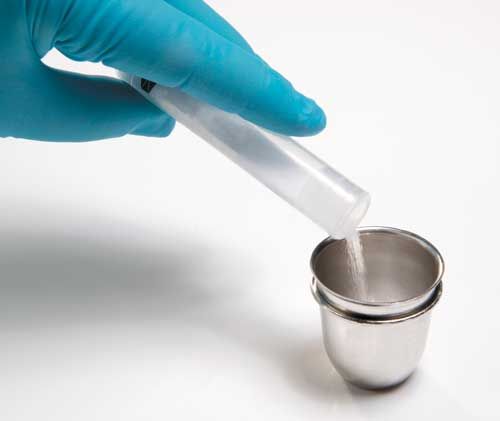
Figure 1: Preweighed flux being poured directly into a crucible without weighing.
Calibration Reference Materials: Generation of Synthetic and Secondary Standards
When standards are not available for purchase from a reliable, highly credible source, the fusion method approach of making synthetic standards from traceable compounds brings the method close to using primary standards for calibration purposes. Calibration standards (fused beads) from these synthetic mixtures can then be used to analyze in-house standards for use as secondary standards for calibration. Multielement (oxide) synthetic mixtures can be now be obtained commercially in sealed containers that can be made into fusion beads in the laboratory (8). These processes can also be performed manually in the laboratory by purchasing pure chemicals of certified concentrations, but analysts must have the equipment, skill, and knowledge to adequately homogenize, package, and seal the synthetic standard compositions properly.
Conclusion
The choice of specimen preparation technique for XRF analysis is critical to achieving the desired accuracy. The choice between pressed powder briquettes and fused glass disks is actually easy to make when one knows whether the samples are matrix-matched or not. If the standards and unknowns are not known with certainty to be matrix-matched, then fusion is the safe choice to ensure that a highly accurate analysis is reported, and gross errors are not. The time involved in the fusion process can now be greatly reduced because of the availability of preweighed flux. The accuracy of XRF analysis of many previously difficult to analyze materials is now facilitated by creating synthetic standards, and then secondary standards from those by using the fusion process. The availability of synthetic standard mixtures for XRF calibration is now greatly enhanced through commercial channels. To learn in more detail about the concepts and practices of these techniques, it is highly suggested to attend the training course and workshop noted in references 2 and 5.
References
- J.A. Anzelmo, M. Provencher, and M.-E. Bouchard, Spectroscopy28(7), 16–23 (2013).
- ICDD annual Practical XRF Course, http://www.icdd.com/education/xrf.htm.
- J.A. Anzelmo, M.-E. Bouchard, and M. Provencher, Spectroscopy29(7), 12–22 (2014).
- P. Bevington, Data Reduction and Error Analysis for the Physical Sciences (McGraw-Hill, New York, 1969), Ch. 2.
- Denver X-ray Conference XRF Sample Preparation Workshop, http://www.dxcicdd.com/16/DXC-Program-2016.pdf.
- “Back to Basics, The Benefits of Sample Preparation by Fusion,” http://claisse.com/expertise.php.
- PANalytical B.V., WROXI--synthetic wide-range oxide standards for fused bead major and minor elemental analysis, Almelo / The Netherlands 949845811 PN 9539.
John A. Anzelmois the President of Claisse USA in Madison, Wisconsin.
The Role of XRF in Cultural Heritage Studies
Carlos R. Appoloni
Different combinations of nuclear, atomic, and molecular spectroscopy methodologies have been used at the Applied Nuclear Physics Laboratory (LFNA) at the State University of Londrina, Brazil, and in collaboration with other institutions, for studies in cultural heritage (1–4). Methodologies such as X-ray fluorescence (including energy-dispersive XRF [EDXRF], portable XRF, and total reflection XRF [TXRF]), Raman spectroscopy, Mössbauer spectroscopy, transmission electron microscopy (TEM), digital radiography, gamma-ray transmission, X-ray microtomography, and X-ray diffraction (XRD), among others, have been used in LFNA studies of art and archaeological objects. Each of these methodologies can be used alone, depending on the considered problem or question to be answered, but is more powerful when properly combined with other techniques, to magnify the range of properties or characteristics to be considered, as well as enhance and deepen the quality of the analysis.
However, besides the first step of macroscopic inspections (using direct and grazing visible light, ultraviolet, infrared, and so on), in the majority of the cases the next step of analysis is XRF inspection. In many situations only one properly chosen XRF variant (EDXRF, portable XRF, TXRF, or synchrotron XRF) is sufficient to achieve the aims of the study. Even when one variant is not sufficient, its results are fundamental to decide and guide the use of another XRF variant or a different methodology or combination of methodologies to complete the analysis.
In this context, some case studies conducted by LFNA will be presented and discussed at a session at the 2016 Denver X-Ray Conference, showing the prominent role of XRF in cultural heritage studies. The first is Travestite Hymenaeus Seeing a Dance in Honor to Priapus, a 17th century painting by Nicola Poussin that has undergone a complete restoration. Many methodologies were used to investigate the painting, but the pigment palette was determined mainly by portable XRF.
Next are archaeological ceramics (from 9200 to 127 years before present [B.P.]) from Maranhão state in Brazil. EDXRF, radiography, Raman and Mössbauer spectroscopies were employed in this study.
For Moema, a famous Brazilian painting by Victor Meirelles de Lima from the late 19th century that has undergone restoration, the pigment palette and varnishes were determined by EDXRF and Raman spectroscopy, respectively.
An Attic red-figure bell-crater from the 4th century B.C., from southern Italy, was investigated by portable XRF to characterize materials used in previous restorations.
The Morro Azul Caves in Paraná State, Brazil (in two caves and a big rock shelter) were occupied three different times. The oldest occupation was by Umbu hunters and gatherers (from to 10,000 to 3000 years B.P.), whereas the two more recent were by Itararé-Taquara farmers and ceramists of the Jê linguistic family (from 4000 to 500 years B.P.). Rock art at this site was made over sandstones and diamictites, and the paintings present figures in red and black, almost always including animals, fantastic human representations, dotted lines, dots, semicircles, emblematic figures, and lattice motifs. In situ measurements with portable Raman spectroscopy and XRF systems were performed to characterize the pigments. Figure 1 shows the laboratory-made portable XRF and Raman spectroscopy systems in position to measure the “red bird” painting on the rock.
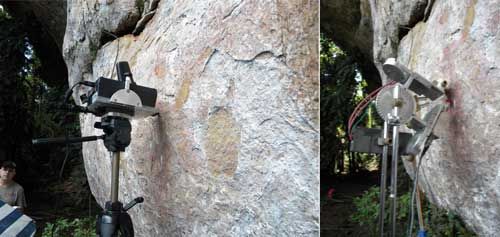
Lastly, provenance studies of Ecuadorian obsidians were performed by portable XRF and compared in very good agreement with results obtained by inductively coupled plasma (ICP), neutron activation analysis (NAA), and particle-induced X-ray emission (PIXE).
References
- C.R. Appoloni, AIP Conf. Proc. V. 1529, 30–39 (2013). DOI: 10.1063/1.4804077.
- M.S. Blonski and C.R. Appoloni, App. Radiation Isotopes89, 47–52 (2014).
- E.A.M. Kajiya, P.H.O.V. Campos, M.A. Rizzutto, C.R. Appoloni, and F. Lopes, Radiation Physics Chem. 95, 373–377 (2014).
- R.A. Ikeoka, C.R. Appoloni, P.S. Parreira, F.Lopes, and A.M. Bandeira, X-Ray Spectrometry41, 12–15 (2012).
Carlos R. Appoloniis an associate professor and researcher at the Physics Department, CCE, State University of Londrina in Londrina, Paraná, Brazil.
Phase Relations of Anhydrous and Hydrous Earth Alkali Aluminates with Calcium, Strontium, and Barium Solid Solution of Binary Ca-Ba, Ca-Sr, and Ba-Sr Aluminates and Their Hydrates
Herbert Poellmann
Earth alkali aluminates play a dominant role in the field of special calcium aluminate cements, which are used extensively in the building and construction industry for self-leveling applications, screeds, and mortars, and in refractory high-temperature applications. Barium cements also can be used in radiation protection. Upon temperature some earth alkali mono-aluminates transform to high temperature modifications. Some of these modifications are stabilized by introduction of foreign ions. Rare-earth-element (REE) dopants in earth alkali aluminates are used in long-term phosphorescence materials. Important REE-dopants are europium, dysprosium, gadolinium, terbium, and lanthanum. Photoluminescence, brightness, and long-term phosphorescence properties can be influenced by using different codopants. Introduction of some REEs also leads to refractories that can be used at extremely high temperatures.
X-ray spectroscopy methods can be used to verify the different phases, phase compositions, and modifications of earth alkali aluminates. High-temperature in situ X-ray diffraction (XRD) is used for phase-change determinations.
Methods
In the examples presented here, synthesis products have been investigated by X-ray powder diffraction methods for phase identification using an X´Pert Pro powder system with Cu-anode equipped with X´celerator or Pixcel detectors (PANalytical). All powder patterns were refined using Le Bail fits or by Rietveld method. Amorphous contents were determined by adding a 20% ZnO internal standard. The crystallization of the synthesis products was followed at different temperatures by XRD (Figure 1). Typical XRD diagrams showing solid solutions and end members in the monostrontium and monobarium aluminate system are shown in Figure 2.
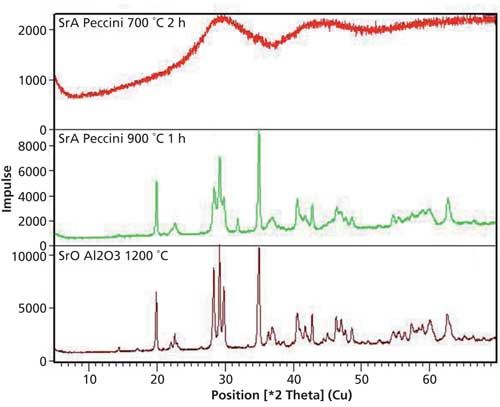
Figure 1: X-ray diffraction diagrams of SrA at different synthesis temperatures.
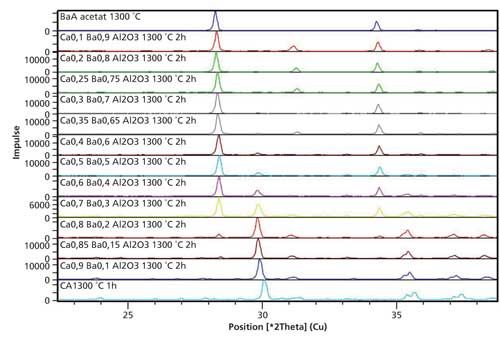
Figure 2: X-ray diffraction diagrams in the region 24.5–35.5 2theta (CuKα) of different solid solution series between CaAl2O4 and BaAl2O4.
X-ray data cluster analysis was performed for high-temperature X-ray diagrams for data reduction and determination of phase changes. Figure 3 shows a clearly separated monoclinic low-temperature cluster and a hexagonal high-temperature cluster with a transformation temperature at 750 °C. Depending on the cooling rate, the high-temperature hexagonal phases can be frozen as metastable phases. The phase-change determinations of some phases were also investigated by thermal analysis using a TG/DTA 320U system (Seiko) and a STA 449 F3 system (Netzsch) coupled with a Tensor II Fourier transform infrared spectrometer (Bruker Corporation) and a QMS 403 D detector (Netzsch) followed by high-temperature X-Ray methods using an HTK 16 high-temperature strip heater chamber (Anton Paar) with heating rates of 25–50 °C per step and holding temperatures for each step of about 20 min. Microstructural investigations were carried out using a LEO 1525 Gemini FEG microscope (Carl Zeiss) at the Center for Materials Analysis (ZWL) in Lauf an der Pegnitz, Germany and a JSM 640 scanning electron microscope equipped with an EDX detector and cryo stage (JEOL).
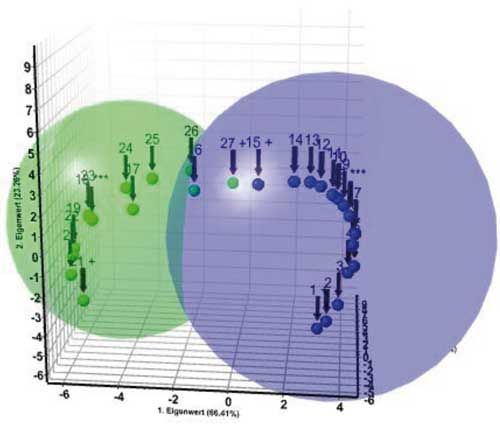
Figure 3: Principal component analysis (PCA) diagram from cluster-analysis of high-temperature investigation of Ca0•2Sr0•8 Al2O4.
After characterization of the anhydrous phases, we tested their hydration behavior by using isoperibolic calorimetry (1). The course of hydration can also be followed using in situ XRD methods by capillary, transmission foils, or reflection geometry. A final XRD investigation of the hydrated materials is performed using powder diffractometry in reflection geometry. All phase identifications were done using High-Score Plus (PANalytical) with PDF-2 and PDF-4 databases (ICDD). The hydration behavior was also investigated using in situ XRD at different relative humidities (100% and 35%) to obtain data about different hydration states of crystallizing hydration products.
Anhydrous Phases
Replacing calcium by strontium and barium can improve the high-temperature refractory behavior of an anhydrous phase, but this replacement is very challenging. The relevant phases were synthesized as pure phases and solid solutions using the Pechini method. Their phase compositions, crystallographic parameters, and hydration behavior were investigated using XRD methods. Replacement of calcium by strontium and barium in the aluminates leads to a volume change of the elementary cell. The refinement of the relevant phases was done using the Rietveld method. Despite the fact that there is a continuous volume change in some solid solution series, symmetry changes within these solid solution series do occur. These different symmetries must be determined by XRD. Depending on the compositions of the solid solutions, variations of monoclinic to hexagonal symmetry occur. These solid solutions also show different reaction behavior and form various hydration products. Symmetry changes occur depending on temperature and cooling conditions.
Hydrated Phases
The hydration behavior of these solid solutions is also influenced by the calcium, barium, and strontium cations. Given that calcium and strontium form hydrates that can be derived from a phase with the composition CaOâAl2O3â10H2O, barium aluminates form different types of hydrates. All different phases were investigated by XRD performed at high relative humidities and dried to 35% r.h. The reaction behavior of the solid solution is very different from the behavior of the components of the system and despite the continuous replacement of calcium by strontium there is a very strong retardation or inhibition occurring in the solid solutions of strontium-monoaluminate–based solid solutions. It has to be mentioned that this hydration behavior is also strongly influenced by the cooling rate applied to the phases, because the distribution of calcium and strontium on different crystallographic sites is important before the hydration stage. This influence of the calcium and strontium distribution is still under further investigation.
Reference
- H. Pöllmann, H.-J. Kuzel, and H. Meyer, Proceedings of the Thirteenth Annual International Conference on Cement Microscopy, J. Bayles , G. R. Gouda, and A. Nisperos, Eds. (International Cement Microscopy Association, 1991), pp. 254–272.
Herbert Poellmannis a professor of minerology and geochemistry at the University of Halle, in Halle, Germany.
Two-Dimensional X-ray Diffraction Detectors
Tom Blanton
Two-dimensional (2D) X-ray diffraction data contain abundant information about the atomic arrangement, microstructure, and defects of a solid or liquid material. In recent years, the use of 2D detectors has dramatically increased in academic, government, and industrial laboratories.
The original detector used for Laue’s first X-ray diffraction patterns in 1912 was a photographic plate based on silver halide technology (1). This detector was a 2D detector with photosensitive coatings on a solid support. In 1916, Debye and Scherrer, and in 1917, Hull, demonstrated diffraction from polycrystalline materials, again using photographic plates as the detector (1).
Photographic film (flexible polymer base) replaced glass plates, and remained the 2D detector used by diffractionists for several decades. The time required for collection of the diffraction pattern, chemical solution processing of the exposed film, and limits in quantitative intensity determination all helped to drive technology development toward a digital 2D detector for X-ray diffraction (XRD) analysis. Originally developed for high-energy physics applications at synchrotron radiation beamlines, new detectors were developed and today find application in laboratory settings. Detector types include wire grid, image plate, and silicon strip (2).
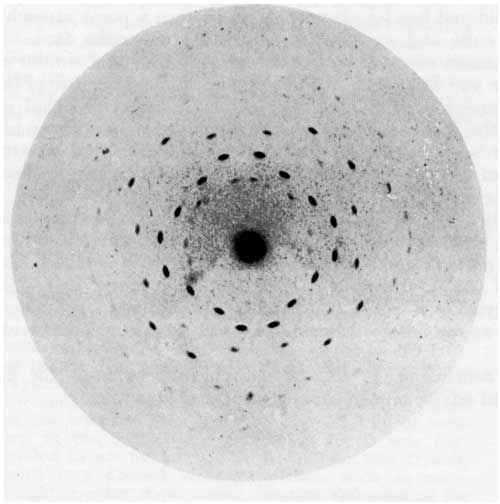
Figure 1: First published diffraction pattern (CuSO4•5H2O) (adapted from reference 3).

Figure 2: First published powder diffraction pattern (C, diamond powder) (adapted from reference 4).
Using 2D detectors enhances the understanding of a material’s microstructure, particularly when analyzing preferred orientation of lattice planes. Analysis of a randomly oriented powder by XRD typically can be carried out using a point detector, because presentation of a random sample in a diffractometer will result in uniform Debye diffraction rings, independent of sample alignment. When a specimen shows texture, lattice planes are not randomly aligned within the sample, resulting in diffraction “arcs” or “spots.” As shown in Figure 3, using a 2D detector for XRD data collection for thermally annealed and annealed and stretched polypropylene (PP) films, one can observe the uniform Debye rings for the annealed PP. However, the annealed and stretched PP has diffraction arcs consistent with preferred orientation relative to the sample surface (planar orientation), and aligned in-plane along the stretch direction.

Figure 3: Two-dimensional XRD patterns collected from polypropylene films. Left pattern sample is annealed PP; right pattern sample is annealed and stretched PP (stretch direction is vertical).
Improvements in 2D X-ray detector technology have resulted in reduced data collection times and reproducible quantitative intensity data compared to using photographic film. Reduced data collection time is critical in laboratories where high throughput of sample analysis prevails. With reproducible quantitative intensity XRD data, successful phase identification using established search match methods can be performed routinely when using a high-quality editorially reviewed diffraction database (5). An analysis of a ceramic powder using a 2D detector (Figure 4) resulted in identification of the ceramic as α-Al2O3 (corundum).
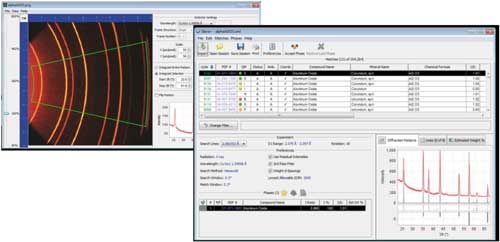
Figure 4: Two-dimensional XRD pattern collected from a ceramic powder (left), and integrated diffraction pattern and phase identification results (right).
A workshop on this topic at the 2016 Denver X-Ray Conference will cover recent progress in 2D XRD in terms of detector technology, geometry, and configuration of the two-dimensional diffractometer. Various applications such as phase identification, texture, stress, crystallinity, combinational screening, and thin-film analysis will be presented. I have co-organized the workshop with Bob He of Bruker AXS, and Scott Speakman of PANalytical and Joseph Ferrara of Rigaku will be joining us in presenting the session.
References
- T.N. Blanton, Powd. Diff.18(2), 94–98 (2003).
- B. He, Two-Dimensional X-ray Diffraction (Wiley, New York, 2009).
- W. Friedrich, P. Knipping, and M. Laue, Sitzungsber. Kais. Akad. Wiss. Munchen, 303–322 (1912).
- P. Debye and P. Scherrer, Phys. Z.17, 277–283 (1916).
- S. Kabekkodu, Ed., ICDD PDF-4+ 2015 (Database) (International Centre for Diffraction Data, Newtown Square, Pennsylvania, 2015).
Tom Blantonis a Principal Scientist and the Database Manager at the International Centre for Diffraction Data in Newtown Square, Pennsylvania.
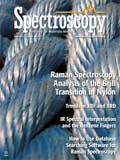
Newsletter
Get essential updates on the latest spectroscopy technologies, regulatory standards, and best practices—subscribe today to Spectroscopy.
Trends in Infrared Spectroscopic Imaging
September 13th 2013An interview with Rohit Bhargava, winner of the 2013 Craver Award. This interview is part of the 2013 podcast series presented in collaboration with the Federation of Analytical Chemistry and Spectroscopy Societies (FACSS), in connection with SciX 2013, the federation?s North American conference.
Raman Reveals Rare Ribbeck Meteorite Clues About Ancient Solar System
May 28th 2025A team of scientists in Poland has unveiled the first detailed structural and magnetic analysis of the Ribbeck meteorite, a recently recovered space rock classified as an aubrite. Using Raman spectroscopy, X-ray diffraction, and advanced magnetic testing, researchers revealed the meteorite's unique mineralogy and its connection to deep space conditions.
Multi-Analytical Study Reveals Complex History Behind Ancient Snake Motif in Argentine Rock Art
May 22nd 2025A recent study published in the Journal of Archaeological Science: Reports reveals that a multi-headed snake motif at Argentina's La Candelaria rock shelter was created through multiple painting events over time.